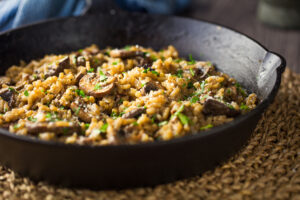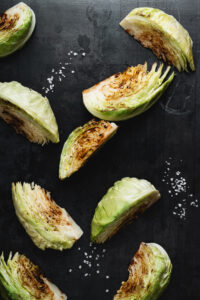Cooking at home more often instead of eating out or relying on premade convenience foods is one of our top recommendations for improving the health of our patients’ diets. Check out these tips and recipes from one of our favorite nutrition and recipe websites, eatingwell.com. Not only can these ideas improve your cooking skills; they also focus on healthy foods that are part of a cancer-fighting diet. Happy cooking!
Keep Knives Sharp
Cooking can feel like a chore if it takes too long to chop up all those healthy vegetables. You need a good chef’s knife—they’re designed to cut through food easily. And keep your knives sharp. It makes a world of difference. Either take them to a pro or use a handheld sharpener. When it comes to your cutting board, go big. Make sure it’s at least 15 by 20 inches so you have plenty of room to work. Put a piece of sticky shelf liner or a damp towel underneath to keep it from slipping, and work from left to right—using the left side to cut, then pushing the prepped food to the right. (Lefties, do this in reverse.) That way, you’re giving your dominant side room to work. When you have the right tools and setup, you’ll be amazed at how much more efficient you are.
Plan Meals Around Produce
There’s no single way to craft a healthy meal, but our best general advice is this: shift your mindset to think about fruits and vegetables first, not protein. Load up half your plate with produce—a colorful variety is the key to making sure you get a broad range of vitamins, minerals, and other nutrients. Add a small serving of whole grains, usually ½ to 1 cup, that takes up about a quarter of your plate. Whole-grain bread, pasta, crackers, and tortillas count as well as unrefined grains like whole-wheat couscous, brown rice, bulgur and farro. Then fill the remaining quarter with protein—no dinner-plate-size T-bones, please! Seafood, poultry, lean beef and pork are good options, or go vegetarian with beans, tofu, legumes, eggs, plant-based “meats,” quinoa, nuts and seeds. And, finally, work in calcium-rich foods throughout your day: milk, yogurt, cheese, dark leafy greens and calcium-fortified dairy alternatives all fit the bill.
Sweeten Green Smoothies with Pineapple Juice
Use juice rather than added sugar, such as honey or maple syrup, to balance the bitter taste of greens and suddenly you have a serving of vegetables that tastes like dessert. Of course, you can use any juice without added sugar, including apple or orange, for example. But the relaxing-poolside flavor of pineapple combined with the ready-to-go convenience of the small, shelf-stable cans makes this our favorite.
Try it: Pineapple Spinach Smoothie
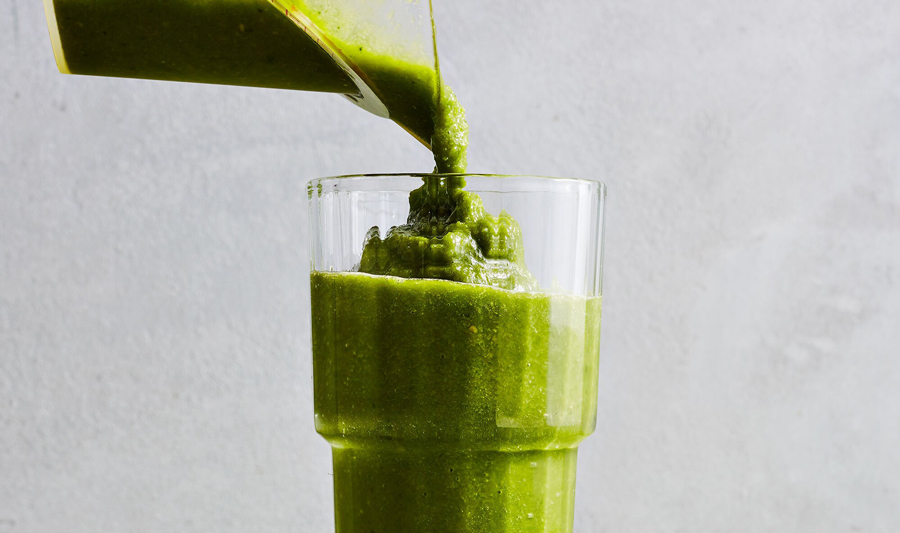
Spread Out Roasting Vegetables
We all know that the most hands-off way to make vegetables delicious is to roast them. But what we sometimes overlook is how to do it properly. If you just heap them onto a sheet pan, you’ll get a sad pile of steamy sogginess. The key to irresistibly caramelized results is to make sure each piece is spaced out so there’s plenty of room for the oven’s hot air to circulate around them. Use two pans if you need to! See our guide to how to roast vegetables, or follow these instructions for the most basic way to do it: Preheat oven to 450°F. Prepare the vegetable of your choice (see chart), making sure to keep pieces about the same size so they cook evenly. Toss with 4 tsp. oil, 1⁄2 tsp. salt and 1⁄4 tsp. pepper. Stir once halfway through roasting. Makes 4 servings.
| Vegetable | How to Prep | Cooking Time |
| Asparagus 2 lbs. | Snap woody ends | 10-15 min |
| Beets, Turnips 1 ½ lbs. | Trim and peel; cut into 1-inch wedges | 20-25 min |
| Broccoli, Cauliflower 1 lb. | Cut florets into 1-inch pieces | 10-15 min |
| Brussels sprouts 1 lb. | Trim; halve small ones (quarter large ones) | 15-20 min |
| Cabbage 1 ½ lbs. | Core; cut into 1-inch pieces | 15-20 min |
| Carrots, Parsnips 1 ½ lbs. | Slice 1/4 inch thick | 20-25 min |
| Fennel 2 large bulbs | Core; cut into 1/4-inch-thick wedges | 25-30 min |
| Green beans 1 lb. | Trim stem ends | 15-20 min |
| Potatoes, Sweet potatoes 1 ½ lbs. | Cut into 1-inch pieces | 20-30 min |
| Summer squash, Zucchini 1 lb. | Trim; quarter and slice 1/4 inch thick | 15-20 min |
| Winter squash 2 lbs. | Peel and seed; cut into 1-inch pieces | 25-35 min |
Steam Vegetables in the Microwave
Right up there with roasting, this is one of the easiest ways to make a side of vegetables. Simply put prepped veggies in a microwave-safe container, add 2 Tbsp. water, cover and push a couple of buttons. (Cook whole potatoes and sweet potatoes directly on the turntable.) Plus microwaving cooks veggies quickly, which helps them retain nutrients. Score!
Stock Your Fridge with a Salad Bar
- Prepackaged greens make tossing up a salad a snap. Or make your own: Buy a few heads of lettuce, wash and store in a sealable container with a couple of paper towels to wick away moisture and prevent sliminess.
- Have at least five other veggies prepped and ready to go. Think: shredded beets and carrots (cover with a damp paper towel to keep them from drying out), sliced radishes, onions and cucumbers, chopped cabbage, broccoli and cauliflower, and cherry tomatoes.
- Keep protein on hand to add staying power and make your salad a meal. Canned beans or fish, cottage cheese, baked tofu and hard-boiled eggs are all good options. Or cook some extra chicken or steak at dinnertime to toss in later in the week.
- Make a large batch of dressing to last through the week.
Combine 1 Part Acid with 1.5 Parts Oil for Vinaigrette
While a 1-to-2 ratio is common, shifting it to 1-to-1½ yields a dressing with a brighter flavor and fewer calories. That means for every ½ cup of acid, such as vinegar or lemon juice, use ¾ cup of oil. Try this Lemon-Garlic Vinaigrette recipe for a good all-purpose take on the formula.
View Recipe: Lemon-Garlic Vinaigrette
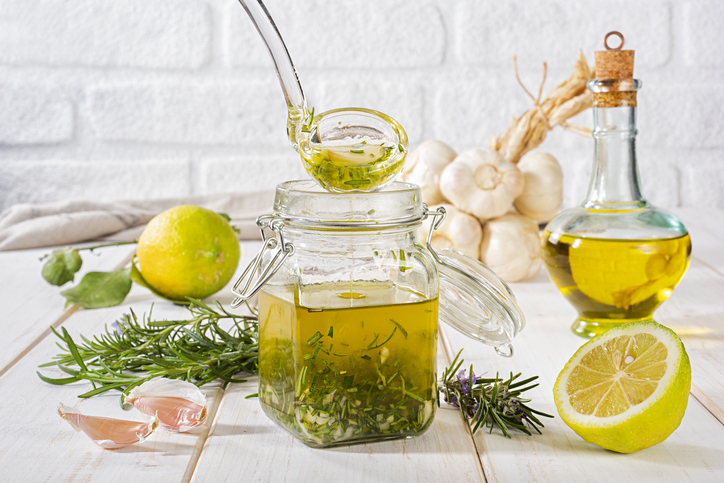
Reduce Food Waste by Making Soup
Before you go food shopping each week, go through your fridge and pull out any produce that’s starting to look sad but is still good, as well as any leftover bits and pieces (looking at you, half a bell pepper!). You’re likely to find enough to make this delicious pot of soup.
Try it: Clean-Out-the-Fridge Vegetable Soup
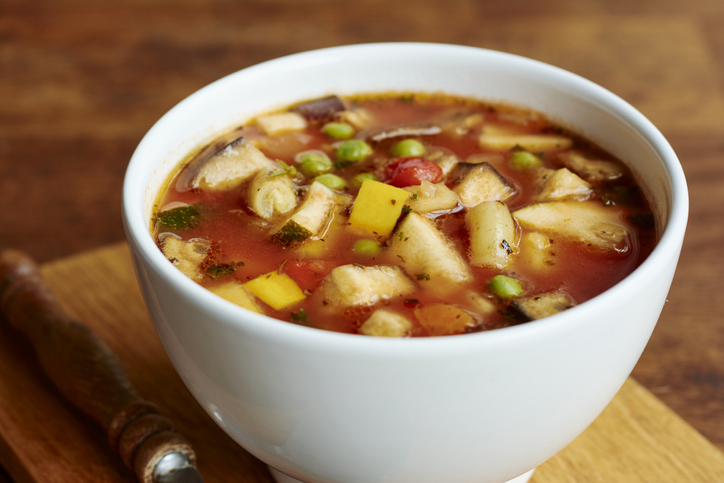
Bake with Whole-Grain Flours
Not only will you greatly increase the fiber content (whole-wheat has nearly four times more fiber than all-purpose, for example), but you’ll add more potassium, magnesium and zinc to what you’re baking. If you want to add whole-grain flour to a family favorite, start small. “Most baked goods can withstand a 50-50 ratio of whole grains to all-purpose flour,” says Charlotte Rutledge, testing kitchen manager at King Arthur Baking Company. “That said, beginning with 25% to 30% will help you see if you’ll need to make tweaks to the other ingredients in the recipe. Whole grain flours are more prone to becoming rancid, so store whole-grain flours in your refrigerator or freezer to keep them fresh.
Try it: King Arthur’s Irish Soda Bread
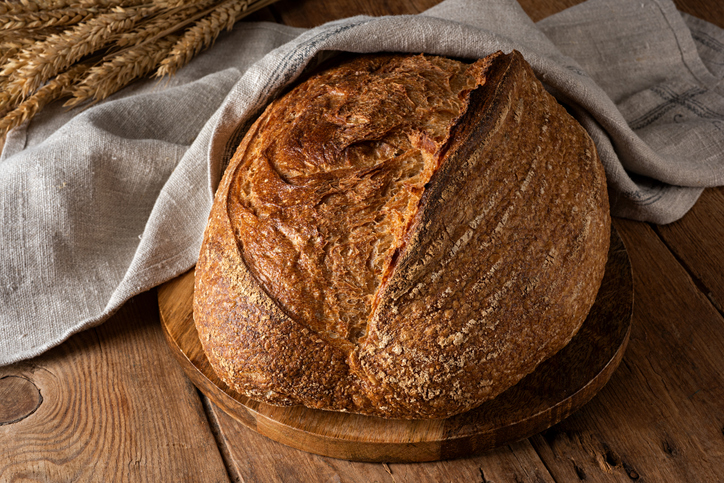
Pound Chicken Breasts to Even Them Out
This boneless, skinless part of the bird often gets cooked to dry disappointment. The reason has a lot to do with its shape: one end is much thicker and wider—and takes longer to cook—than the other. Take a moment to pound the thicker end until it’s the same thickness as the center to ensure more even cooking and juicy meat.
Try it: Lemon Chicken Piccata

Article adapted from EatingWell.com
Photo credits: Eva Kolenko




